Educational Programs
Access tools and presentations to help advocate safe prescription drug practices for the following groups.
Introduction
Helping others is key to the Generation Rx mission. Whether you are preventing unnecessary access to medicine, intervening at signs of misuse, or supporting recovery; this page has information for you.
Preventing unnecessary access to prescription medication by properly storing and disposing of medications is a primary defense in prescription drug misuse prevention. Modeling medication safety behaviors and talking with loved ones about Generation Rx medication safety messages will aid in preventing prescription drug misuse.
Prescription drug misuse impacts many families nationwide, knowing how to properly intervene and support recovery is essential to overall health. Refer to the Signs and Symptoms of Prescription Drug Misuse , Taking Action in Drug Overdose Situations, and The Role of Naloxone in Reversing Opioid Overdoses sections for more information on supporting a loved one. To find treatment options, please use the Finding Help link below.
The Partnership for Drug Free Kids is committed to supporting the whole family as they address every aspect of substance use and addiction, from prevention to recovery. For more information, use the link below.
The Mayo Clinic experts provide key information on symptoms and causes of prescription drug misuse. For more information, use the link below.
To learn the facts about commonly used drugs including a brief overview, street and clinical names refer to the link below for National Institute on Drug Abuse (NIDA).
Signs and Symptoms of Prescription Drug Misuse
There are physical and behavioral signs of prescription drug misuse, though these are often dependent on the exact type of drug(s) being misused:
| Prescription Opioids | Prescription Sedatives | Prescription Stimulants |
| Nausea | Slurred speech | Insomnia |
| Shallow breathing | Shallow breathing | Increased attention span |
| Poor coordination | Drowsiness | Decreased appetite |
| Drowsiness | Disorientation/Dizziness | Irritability |
| Confusion | Poor judgement | Restlessness |
| Source: Mayo Clinic, NIDA, Partnership for Drug Free Kids | ||
Some of these signs and symptoms may overlap with common behaviors exhibited by teens not misusing drugs—remain alert to unique behaviors, including:
- Lost or misplaced prescription medications
- Missing pills from prescription bottles
- Excessive mood swings or hostility
- Decline in athletic or academic performance
- Changes in friends and peer groups
- Changes in extracurricular activities
- Concerns noted by coaches, organization leaders, teachers, or administrators
For more information, consult:
Partnership for Drug Free Kids
Mayo Clinic
NIDA
Taking Action in Drug Overdose Situations
A drug overdose is the accidental or intentional ingestion of a drug in an amount that is higher than the body can tolerate. A drug overdose can also occur when multiple drugs (including alcohol) are taken together. In an overdose situation, an individual may show any of the following symptoms:
- Seizures
- Dilated pupils
- Cold, clammy skin
- Slow or shallow breathing
- Not breathing (respiratory arrest)
- Very fast, slow or absent pulse
- Unconsciousness
- Confusion
If you believe that a person has overdosed on any type of drug, including prescription medications, take action by following these steps:
- Call 9-1-1 immediately. Tell emergency personnel any information that you can glean about the type of drug(s) ingested, how much, etc. Begin CPR if the person is not breathing.
- If the person is breathing but not fully conscious, move him or her into the recovery position (see below). This position is designed to permit the draining of fluids away from the airways, thereby preventing suffocation.

- If the overdose might be the result of ingestion of an opioid (including prescription opioid pain medications and/or heroin), administer Naloxone if it is available. For more information on Naloxone, read the section below.
- Stay with the person until help arrives.
For more information on taking action in opioid overdose situations, visit: http://harmreduction.org/issues/overdose-prevention/overview/overdose-basics/
The Role of Naloxone in Reversing Opioid Overdoses
The U.S. Food and Drug Administration (FDA) approved Naloxone (or Narcan®) in 1971 to reverse the deadly effects of opioid overdoses. Naloxone reverses opioid overdoses because it acts as an antagonist at opioid receptors, meaning it blocks the effects elicited by opioid drugs (e.g., prescription opioid pain medications and heroin) in the body. In an overdose situation, opioids cause death through modifying the brain’s respiratory center—essentially, you stop breathing. By administering Naloxone, the ability for the opioid drug to stop respiration is blocked or prevented, and the individual resumes breathing. Initially, healthcare professionals injected Naloxone only in hospital settings, such as emergency rooms. However, the setting and logistics surrounding Naloxone use has changed in response to the emerging epidemic of prescription drug misuse. To find a Naloxone distribution program in your area, consult the search engine labeled, “Overdose Prevention Program” on the following site:
http://harmreduction.org/overdose-prevention/overdose-news/prescribe-naloxone/
It is critical to remember two precautions regarding use of Naloxone. First, because of Naloxone’s actions in the body, it will precipitate withdrawal-like symptoms upon immediate administration in an individual physically dependent on opioid drugs. Therefore, the individual receiving Naloxone may become combative or agitated, begin vomiting, or experience other withdrawal-like symptoms. Second, if the patient actually overdosed on a non-opioid drug (prescription sedatives, alcohol, etc), administering Naloxone will have no effect and it will not rescue breathing. It only rescues breathing if the patient overdosed on a prescription opioid pain medication (OxyContin, Vicodin, etc) or opioid-like drug, such as heroin. For more information on Naloxone, visit:
The Harm Reduction Coalition – Understanding Naloxone
The Harm Reduction Coalition – Administering Naloxone
“Exploring Naloxone Uptake and Use—a Public Meeting”, hosted by the FDA
Finding Help
Do you or someone you know need help with a substance use disorder? Click the link below to access the Behavioral Health Treatment Services Locator, an on-line source of information for persons seeking treatment facilities in the United States or U.S. Territories for substance abuse/addiction and/or mental health problems.

